By Eric Vandenbroeck and co-workers
The Cold War part one
There are different versions about when the Cold War
would have started, there is the Western version which we will mention underneath,
yet this contrasts with the version that is thought in Russia including as
thought to all Rissian diplomats and graduates of
the Foreign Intelligence Academy of the SVR (Foreign Intelligence
Service).
The story they are thought is that the Cold War
started following a coup orchestrated by the US and the UK to topple the
Lenin regime and kill Lenin. This idea was started by Secretary of State
Lansing when he told President Wilson on 10
Dec. 1917 that the only hope for Russia lay in setting up a “military
dictatorship.” Lansing’s idea was to choose one man and make him the boss of
Russia on the side of America and the Allies. And in turn, David R. Francis,
the American ambassador to Russia, asked
Washington for 100,000 troops to take Petrograd and Moscow to support the
coup against Lenin.
And while the Cold War later in the West became a time
of tension, fear, and danger, but because it ended in ‘victory’ for the West,
it came to be viewed with nostalgia, last week Britain's army
chief General Nick Carter as reported by the BBC explained
that there is a greater risk of an accidental war breaking out between the
West and Russia than at any time since the Cold War, with many of the
traditional diplomatic tools no longer available.The
risk of an accidental war breaking out between Russia and the West is greater than at
any time during the Cold War, Britain's most senior military officer has
said in an interview with Times Radio.
This ( nostalgia
aside) made us decide to revisit and take a close look at what started the
previous cold war and what we can learn from it for when the next one according
to General Nick Carter might start.
For a millennium, Russia has been an autocracy with power
concentrated in the hands of an all-powerful leader or leadership group. The
strong centralized rule has held together with a disparate, centripetal empire
and preserved it from the predations of powerful foreign enemies. Sporadic
attempts at democracy have ended in a return to the same default mode of
governance; the cause of the state has taken priority over the interests of the
individual.
Tsarist Russia and
Weimer Germany were failing states before either Lenin or Hitler came along.
But that does not mean their victories were foregone conclusions. Neither man
had ever run anything; their immediate
supporters hadn't either.
By summer 1921,
around 27 million people in Russia were dying from starvation, including some 9
million children.
Maxim Gorky, a
Russian writer and independent Marxist who had been exiled by Lenin for
opposing the Soviet dictatorship, sent his own appeal.
J. Edgar
Hoover replied to Gorky, saying
certain conditions would have to be met before U.S. aid could be sent: All
Americans had to be freed. American relief workers had to have complete freedom
to do their jobs. Distribution would be on a non-political basis. The relief
workers would need free transportation, storage, and offices.
Lenin stalled. He was convinced the aid
workers, would-be spies.
The history of the
twentieth century, worldwide, was marked by the two world wars. The Russian Revolutions of 1917 were a consequence of the First World War, the Cold War of the Second.
For a millennium,
Russia has been an autocracy with power concentrated in the hands of an
all-powerful leader or leadership group. A strong centralized rule has held
together with a disparate, centripetal empire and preserved it from the
predations of powerful foreign enemies. Sporadic attempts at democracy have
ended in a return to the same default mode of governance; the cause of the state has taken priority over
the interests of the individual.
The term "Cold
War" itself was first used by the English writer George Orwell in an article published in 1945 to refer to what
he predicted would be a nuclear stalemate between “two or three monstrous
super-states, each possessed of a weapon by which millions of people can be
wiped out in a few seconds.” It was first used in the United States by the
American financier and presidential adviser Bernard Baruch in a speech at the State House in Columbia,
South Carolina, in 1947.
Churchill was more
concerned with Eastern Europe than was Roosevelt, and not only because he felt
that Britain owed something to a heroic and tragic Poland.
He knew the history
and the geography of Europe: he was concerned with Austria, Hungary,
Czechoslovakia, rather than with Romania and Bulgaria. The last two had been
often dependent on imperial Russia, while the others belonged to Central,
rather than Eastern, Europe (As late as December 1944 he wrote to Roosevelt
about that distinction.) But his powers were limited.
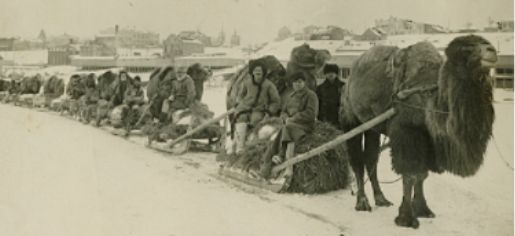
Conferences in Yalta
in February and Potsdam in July 1945 were intended to secure a sense of lasting
global peace and a new, functioning system of international cooperation, but
they took place against this background of hurt and resentment. The British,
Americans, and Soviets had been thrown together in a somewhat unlikely wartime
alliance, and only common effort and common sacrifice had advanced it from a
matter of convenience to a relationship of nascent respect. By 4 February 1945,
when Stalin, Roosevelt, and Churchill gathered in Yalta’s Livadia
Palace, there was a certain willingness not to throw away the gains that had
been made.
But history is not
always made through the logical development of policy. Policies are made by men
and women, and the personalities of the leaders of the Big Three Allied powers
and the interactions between them would do much to determine the shape of the
postwar world, at times retreating from, at times hastening, the advent of the
Cold War. Stalin had taken a conscious decision to use charm and cunning to
extract what he could from the face-to-face discussions with his fellow
leaders. At times he would be aggressive, at others conciliatory, but always
focused on achieving his goals. Roosevelt and Churchill, the latter from an
increasingly weakened position, had other aims and other negotiating styles. In
this clash of wills and egos, history would judge that the British and
Americans allowed themselves to be bullied and intimidated by Stalin.
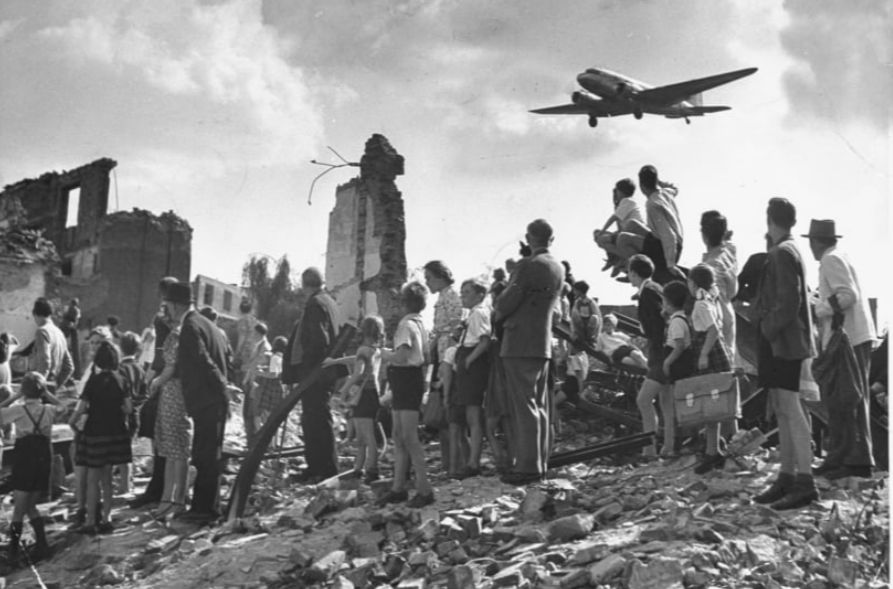
Each of the three leaders brought his demands.
Stalin’s most pressing goal was to retain his vast territorial gains in Poland
and install a pro-Soviet government in the country. This was to cause much wrangling
over the days that followed and dominated the agenda for seven of the eight
plenary sessions. The Soviet leader held the upper hand, for his troops had
already overrun eastern and central Europe, with much of Poland,
Czechoslovakia, Romania, Bulgaria, and Hungary under Red Army control.
President Roosevelt had two principal aims: to persuade
the Soviet Union to join the war against Japan, which proved so costly in American
lives, and to cajole Stalin into accepting his proposals for a new
organization, the United Nations. He believed that such a body was the only
means of avoiding future global conflict.
Churchill’s overriding goal was to preserve the
integrity and status of both Great Britain and her empire, which still ruled
over a quarter of the world’s population. He also had strong views on Poland,
on whose behalf Britain had first declared war on Nazi Germany. Above all else,
he was determined to prevent postwar Europe from being dominated by the Soviet
Union.
Stalin appeared in fine humor, yet
behind the smiling facade was an ingrained distrust of both Churchill and
Roosevelt. Just a few months earlier, he had described the British prime
minister “as the kind of man who will pick your pocket of a kopeck if you don’t
watch him!” As for the American president, Stalin said that Roosevelt “dips his
hand only for bigger coins” It was an apt metaphor coming from one who had
robbed a bank in his twenties. When Stalin stole, he did so on a grand scale.
America’s ambassador to the Soviet Union, W. Averell
Harriman, sensed a peculiar dynamic between the two men. “I think Stalin was
afraid of Roosevelt,” he said. “Whenever Roosevelt spoke, he watched him with a
certain awe. He was afraid of Roosevelt’s influence in the
world.” Harriman noted that Stalin never displayed the same sense of awe
when talking with Churchill.
Stalin had good
reason to feel confident. In the weeks before the conference, Soviet
intelligence had supplied him with copies of the British strategy documents for
the meeting. It meant Stalin knew London’s aims and weaknesses, and he knew the
negotiating strategy Churchill planned to adopt. Correspondence between
Churchill and Roosevelt, provided by the Cambridge spies Guy Burgess and Donald
Maclean, revealed the western Allies’ disagreements about the postwar Europe
they wanted to see. Forewarned, forearmed, Stalin held the psychological
advantage and used it to decisive effect.
He knew, in
particular, that the Americans and British were unsure about the solidity of
their alliance and divided on their postwar aims. And he knew that the British
feared the Soviet military might enough to avoid confrontation on some of the
key divisive issues that would arise.
In Jill Rose’s
Nursing Churchill: Wartime Life from the Private Letters of Winston Church
ill’s Nurse Doris Miles speaks of him strolling down the corridor ‘with only a
towel around him. Another of his nurses, Dorothy Pugh, records similar
instances in her wartime diary. Terry Waite recalls, ‘We had a conversation in
which she [nurse Pugh] mentioned that she had been the Matron to Churchill. She
told me that Churchill wore the pajamas of that period with the open fly, which
sometimes showed his private parts, and she would say, “Put it away, Winnie!” I
feel they had a great closeness, God rest her soul.’ Commenting
in ‘A Unique WWII Archive from Churchill’s Nurse’.
Soviet intelligence
reports, some accurate, others exaggerated, deepened Stalin’s mistrust. His
responses grew increasingly vehement. He made threats that were in turn viewed
by the West as disproportionate and antagonistic. The self-amplifying cycle of antipathy
pushed Washington and London towards the very hostility that Stalin had begun
by imagining in them.
Churchill could no
longer dismiss Stalin’s behavior as harmless. He wrote to him with a stark
warning of the future that would emerge from a breakdown in East-West trust.
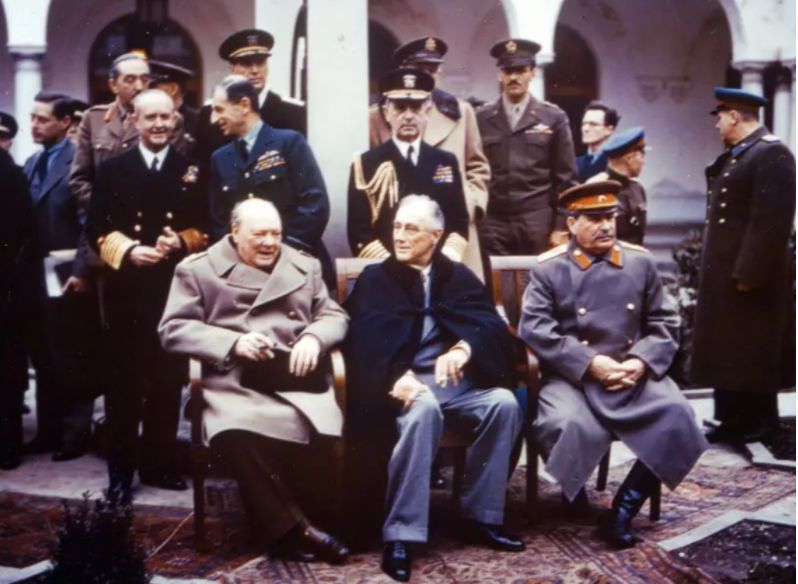
At Yalta in February 1945, Winston Churchill, a dying
Franklin Roosevelt, and the cagey Joseph Stalin carved up Germany, with the
Russians taking the eastern half and the Allies dividing up the West.
The carving up of Germany took place on 1 August 1945
at Potsdam with the signing of the Potsdam
Protocol by President Harry S.Truman,
Prime Minister Clement Attlee, and Marshal Joseph Stalin, provisionally only
until the signing of a peace treaty between the involved countries. At this
point, Russia took over the northeastern part of East Prussia with
Königsberg/Kaliningrad, Poland annexed the rest of East Prussia plus Pomerania,
Eastern Brandenburg, and all of Silesia while Czechoslovakia annexed the
Sudetenland, in all, 1/3 of autonomous prewar German territory.
The post-WWII German-Polish border was drawn southward
from the Baltic along the Oder and Neisse rivers. Even though Pomerania’s
capital Stettin/Szczecin (the birthplace of Catherine the Great, born in 1729
in Stettin) lies on the western side of the Oder river and consequently should
still be German, it is today a Polish harbor city.
Despite occasional outbursts, the meeting at Yalta had
been conducted in an atmosphere of goodwill. Potsdam, according to Hugh Lunghi,
was ‘a
bad-tempered conference’. The alliance of personalities, the human glue that
held things together when politics were tearing them asunder, was dissolving.
Roosevelt was dead; within a few days, Churchill would be out of office,
replaced by Clement Attlee. By the end of the Potsdam gathering, only Stalin
would remain from the wartime Big Three leaders.
Late in February 1946, George Kennan, the No. 2
at the U.S. Embassy in Moscow, sent his momentous “long telegram” to the State Department
analyzing Stalin’s malign designs on Europe and sketching a containment
strategy. A few weeks later, Churchill ventured to Missouri to give his epochal
speech: “From
Stettin in the Baltic to Trieste on the Adriatic, an iron curtain has descended
across the Continent.”
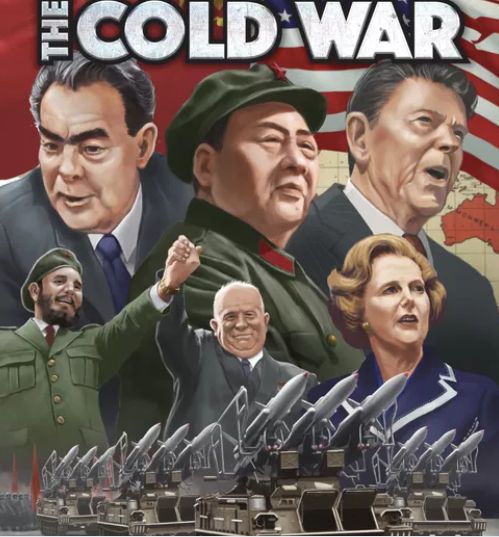
Stalin made the diplomatic wrangling moot 18 months
later when the Soviets abruptly sealed off the roads and railways linking
Berlin to the West and cut off sources of food, clean water, electricity, coal,
and medicine from the east. The blockade meant starvation for the citizens of
West Berlin and was designed to force the Allies to abandon the capital.
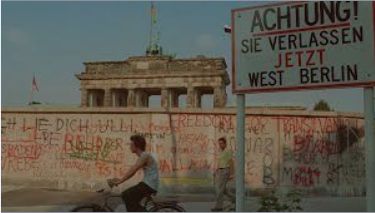
After using nuclear weapons against Japan, he would
send an urgent message to the managers of the Soviet atomic program. ‘Hiroshima
has shaken the whole world. The balance has been broken. Build the Bomb – it
will remove the great danger from us.’ In the minds of many Soviet
citizens, the demonstration of western nuclear might represented an imminent
threat.
In August 1959, with his second term nearing its end,
Eisenhower made the surprise announcement that he and Soviet premier Nikita S.
Khrushchev would visit each other’s countries as a means of “thawing some of
the ice” of the Cold War. Khrushchev’s trip to the United States in September
1959 resulted in plans for a four-power summit involving Great Britain and
France and for Eisenhower’s visit to Russia in early summer 1960. Then, in May
1960, the Soviet Union shot down an American U-2 surveillance plane piloted by
Francis Gary Powers. The ensuing collapse of the summit and the subsequent
cancelation of Eisenhower’s trip to the Soviet Union amounted to a critical
missed opportunity for improved US-Soviet relations at a crucial juncture in
the Cold War.
Eisenhower’s prestige within the Soviet Union was so
great, and the trip, if it had happened, could well have led to a détente in
the increasingly dangerous US-Soviet relationship. Instead, the cancelation of
Ike’s visit led to an escalation in hostilities that played out around the
globe.
This led to the formation of NATO, the founding of the
West German federal republic, with Konrad Adenauer
as its first chancellor, and eventually, the unification of a Germany firmly
allied with the Western democracies against Russian expansionism: the world as
we know it today.
FDR and Churchill negotiated much of the end of the
war at Yalta. Neither would see Potsdam through to the end. FDR died in office,
and Churchill was voted out of office.
The Cold War thus began as a competition between
capitalist and communist governments to expand their social contracts as they
raced to deliver their people a better life. But the economic shocks of the
1970s made promises of better living untenable on both sides of the Iron
Curtain. Energy and financial markets placed immense pressure on governments to
discipline their social contracts. Rather than make promises, political leaders
were forced to break them.
In the West, neoliberalism provided Western leaders
like Ronald Reagan and Margaret Thatcher with the political and ideological
tools to shut down industries, impose austerity, and favor the interests of
capital over labor. But in Eastern Europe, revolutionaries like Lech Walesa in
Poland resisted any attempt at imposing market discipline. Mikhail Gorbachev
tried to reform the Soviet system in vain, but the necessary changes ultimately
presented too great a challenge.
Faced with imposing economic discipline antithetical to communist ideals,
Soviet-style governments found their legitimacy irreparably damaged. But in the
West, politicians could promote austerity as an antidote to the excesses of
ideological opponents, setting the stage for the rise of the neoliberal global
economy.
To stop this, access to the West through West Berlin
had to be cut off. In August 1961, Soviet premier Nikita Khrushchev authorized
East German leader Walter Ulbricht to begin constructing what would become
known as the Berlin Wall. The wall, started on Sunday, 13 August, would
eventually surround the city, despite global condemnation, and the Berlin Wall
itself would become the symbol for Communist repression in the Eastern Bloc.
It also ended Khrushchev’s attempts to conclude a peace treaty among the Four
Powers (the Soviets, the Americans, the United Kingdom, and France) and the two
German states.
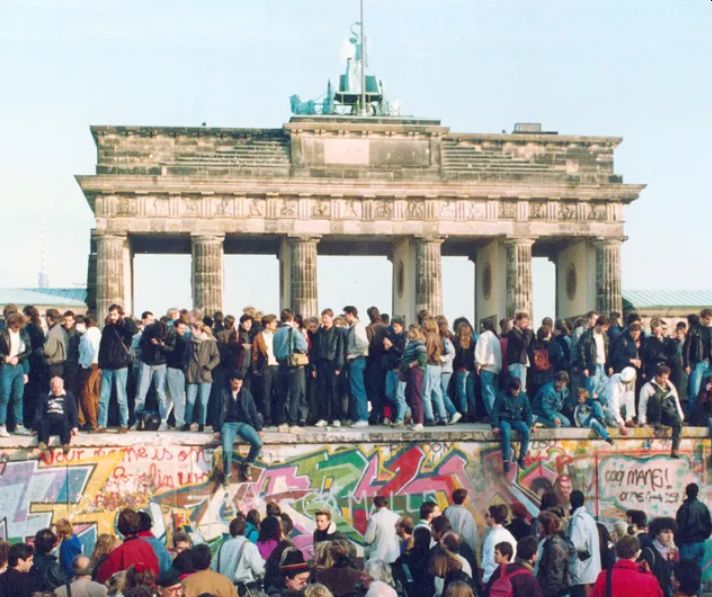
The CIA recognized the impact the Wall would have on
their work in Berlin. The possibilities for obtaining information deteriorated
significantly by September 1961, and the CIA feared morale would drop among its
employees in the city. The staff of Berlin Operations Base (BOB) was to be
reduced from around 95 to 75. The importance of BOB as an outpost in hostile
territory diminished after 1961. This was especially true of what the Americans
and the British called HUMINT (human intelligence), namely gathering
intelligence by agents. Reconnaissance flights by the American U-2 spy plane
over the Soviet Union had been undertaken since the mid-1950s with great
success. As will be seen, other indications of the changes taking place in the
gathering of intelligence were the construction of the Berlin spy tunnel and
the erection of large listening stations in the city. The focus on the human
being as a source of information, as a secret agent, began to wane.
Technological progress meant that telecommunications and electronic
surveillance became the most essential tools of espionage.
When Gorbachev became
general secretary in March 1985, following the death of the final interim
leader, Konstantin Chernenko, he inherited the Soviet Union in economic and
spiritual decline.
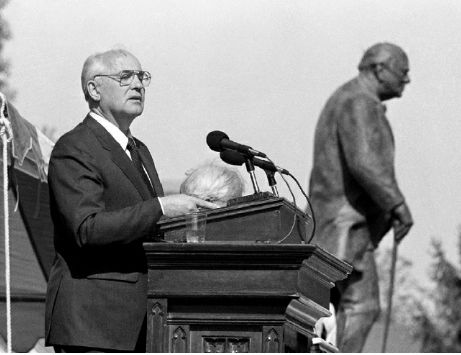
The first of their
five summit meetings would take place within eight months of Gorbachev assuming
office. ‘Time
is short,’ he told Dobrynin. ‘We need to get to know Reagan and his plans,
and most importantly, to launch a personal dialogue with the American
president.’ The emphasis on personal rapport was new. Previous general
secretaries had lacked anything approaching a personality and had been too
sick, or their time in the post too short, for a meeting to be arranged with
Reagan. Meeting face to face, Gorbachev told Reagan, could ‘create an
atmosphere of trust between our countries … For trust is an especially
sensitive thing, keenly receptive to both deeds and words. It will not be
enhanced if, for example, one were to talk as if in two languages: one – for
private contacts, and the other … for the audience.’1
When they met again a
year later, in Reykjavik in October 1986, they were pals, calling each other by
their first names and – astoundingly – giving serious thought to the
dismantling of all nuclear weapons within ten years. The deal might have been
struck, had Reagan not insisted on the right to continue the development of
SDI. Gorbachev tried to look on the bright side. ‘In spite of all its drama,
Reykjavik is not a failure,’ he told the final press conference. ‘It is a
breakthrough, which allowed us for the first time to look over the horizon.’2
Many high officials
struck up warm relations, too, in a way that was largely unthinkable in the
recent past. The only people who did not get along were Raisa and Nancy.3
Gorbachev had gambled
on his relationship with the West. He had banked on securing concessions for
the Soviet Union in exchange for allowing the peaceful collapse of socialism in
eastern Europe. But he had misread the psychology of the Cold War. The brief
interlude of warm personal relations with Ronald Reagan and Margaret Thatcher
persuaded him that the West might offer the USSR a way out of its dire economic
and social predicament. But four decades of entrenched hostility could not be
wiped away. With the communist monster at their mercy, the western powers were
hardly going to take their foot off its throat.
Gorbachev was
surprised and affronted when the Americans rejected his request for big loans
to help perestroika succeed. He complained that Bush had left him and the
Soviet Union ‘to stew.’ But Gorbachev’s indignation, Anatoly Chernyaev wrote, was ‘the wail of a desperate man whose
control over his country was visibly slipping away – of one who no longer
understood what he was trying to achieve.
Three decades after
the Cold War ended, the hopes for a new and more cooperative era in world
politics have been lost. With the rise of China and the resurgence of Russia,
today, there are once again global powers rivaling those of the West. We are
now in a Second Cold War, and international security is under threat.

The Soviets had their
own James Bonds. The hero of the 1974 film The Starling and the Lyre battles a
western plot to sow discord between the USSR and her allies, makes long
speeches about the US military-industrial complex, and enjoys a weepy romance
with a female spy. In The Shield and the Sword, a title is drawn from the KGB’s
service emblem (overleaf), secret agent Belov is pitched into action against
the Nazis. By the time of his fourth film appearance, he was the poster boy of
Soviet postwar espionage in the minds of millions, including that of the
sixteen-year-old Vladimir Putin, who went straight from the cinema to volunteer
his services to the KGB.
Continued in part
two.
1. Anatoly Chernyaev, Notes from the Politburo Meeting, 21 January
1989, trans. Svetlana Savranskaya, The Archive of the
Gorbachev Foundation, Cold War International History Project, Virtual
Archive, CWIHP.
2. See
‘Gorbachev: his life and times, William
Taubman in discussion with Vladislav Zubok.
3. D. Reynolds,
Summits: Six Meetings that Shaped the Twentieth Century, London, Allen Lane,
2007, p. 193.
For updates click homepage here